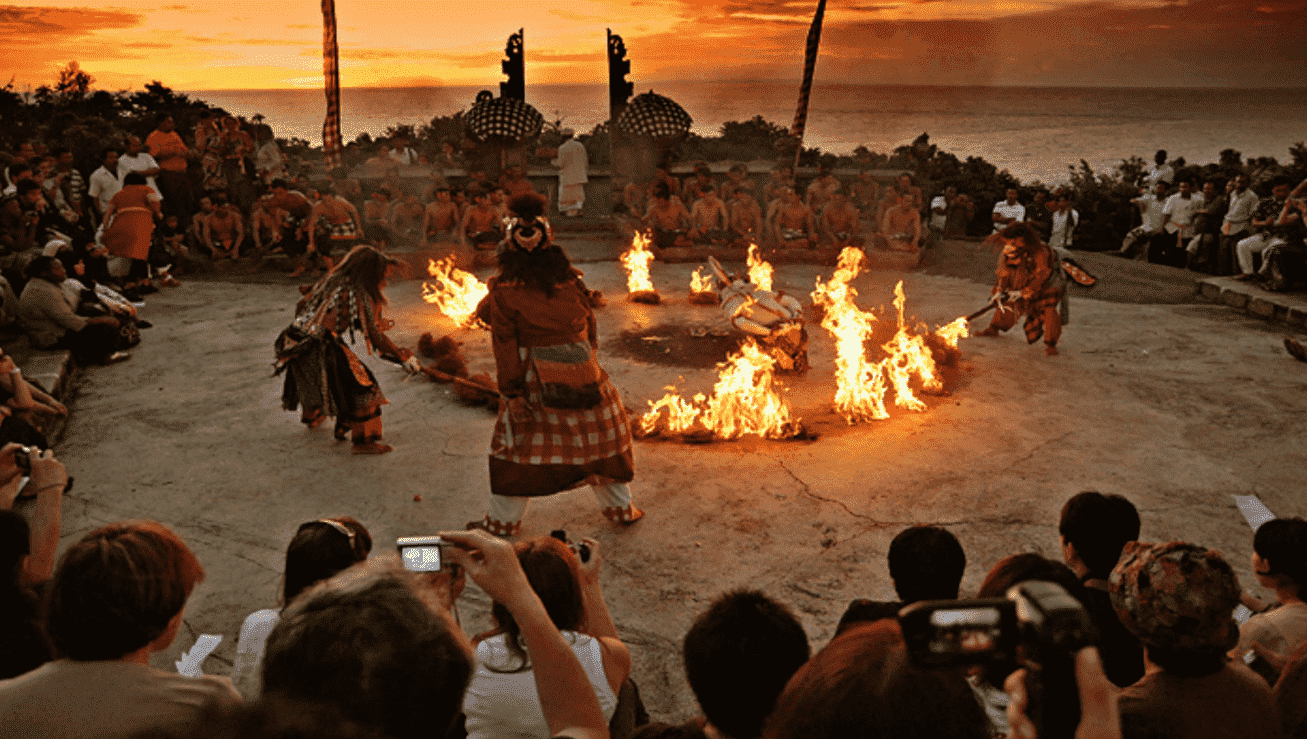
Bali, the renowned “Island of the Gods,” stakes a serious claim to be paradise on earth with its rugged coastlines and sandy beaches, diverse landscape of hills and mountains, lush rice terraces, a magnificent backdrop of volcanic slopes and vibrant, intensely spiritual, and distinctive culture and draws visitors with its breath-taking natural splendour. Bali is among the most visited island destinations and one that routinely wins travel accolades thanks to its world-class surfing and diving facilities, a sizable number of cultural, historical, and archaeological sites, and an immense selection of lodgings. White Water Rafting Bali is known for its numerous adventure spots, but one of the most visited is the white water rafting along the Ayung river. The adventure started with a trek in the lush green forest of Ubud, where we had to climb down 500 steps. The steps were a bit tiring and slippery, but the beautiful view around us made up for it. While rafting along the river, the water currents were quite strong, but that elevated the fun. Along the Ayung river, there are many cave paintings and rock sculptures of the Ramayana. Along with the beautiful scenery and adrenaline-filled ride along the river, one could take the time to admire the immaculate artwork. Uluwatu Monkey Temple One of the most well-known locations for those embarking on a cultural journey of the area is the Uluwatu temple, which offers a genuine glimpse into Balinese culture. It provides the most stunning background at sunset, perched atop a rocky outcrop about 70 metres above the roaring waves. Balinese Hindus believe that Brahma, Vishnu, and Shiva’s combined powers merge here. Siva Rudra, the Balinese Hindu deity of all elements and facets of life in the world, is worshipped in Uluwatu Temple due to this belief. The temple is filled with monkeys. One such activity that emphasises Bali’s close ties to India is the trance-inducing Indo-Balinese ritual dance known as Kecak. Kecak hypnotizes you with its strange sounds, and every time you think back on the experience, an excellent memory of the beats come to mind. When you first enter the Batubulan dance stadium, you probably anticipate seeing yet another musical presentation of the well-known Hindu epic Ramayana. One has no clue how quickly this relatively straightforward dancing form can develop its own type of mesmerism. Balinese culture is comparable to classical India’s, but experiencing a live Kecak performance is a whole other experience. Behind an impenetrable curtain, a magnificent spectacle is revealed. On the stage, a circle of more than fifty men wearing traditional attire are seated. This chanting march is supposed to be led by as many as 150 men. One performer narrates the story in both Balinese and Sanskrit throughout the performance. This theatrical play is based on The Ramayana, which is performed in some of Bali’s most well-known temples. The story is also known as the Ramayana monkey chant. For instance, trance rites come to mind when Hanuman burns the stronghold. Hanuman receives a priest’s benediction before beginning the fire dance. Ritual chanting is heard in the background as this epic story is being told. The Kecak dance comes to a dramatic end when the sun sets, and the sky grows ominous in the background, showing the cheeky monkey setting the palace on fire. The event comes to a close as smouldering orange and crimson red flames burn in the stage’s centre. Kecak is an exorcism that induces trance and originated in Sanghyang in the early nineteenth century. It is a dance that embodies beauty, bravery, battle strategies, and a clear moral lesson. It is beautiful to learn about Indian and Balinese cultures through this cultural event and to see a country’s traditional dance. One will be amazed by the beautiful work of art that is in this Indo-Balinese dancing form. Every component, including the makeup, the artists, the writing, and the portrayal, conveys a story. Hinduism is viewed from a distinctive perspective that combines traditional Balinese cultures’ vibrant animalism with ancient India’s gods. When I was in Bali, this resulted in tremendous celebrations nearly every day, complete with continuous decoration, parading, and dancing that was publicly displayed to paying tourists. The villagers genuinely believed in the beliefs, and the festivities were much more extravagant when no tourists were around, as I realised when I ventured outside the visitor centres. Moreover, as I paused to look, I saw that at the northeast corner of every other house was a temple, roughly three metres square. It was there, adorned with well-carved geometric ornaments.
20 Apr 2023
Arya Zade